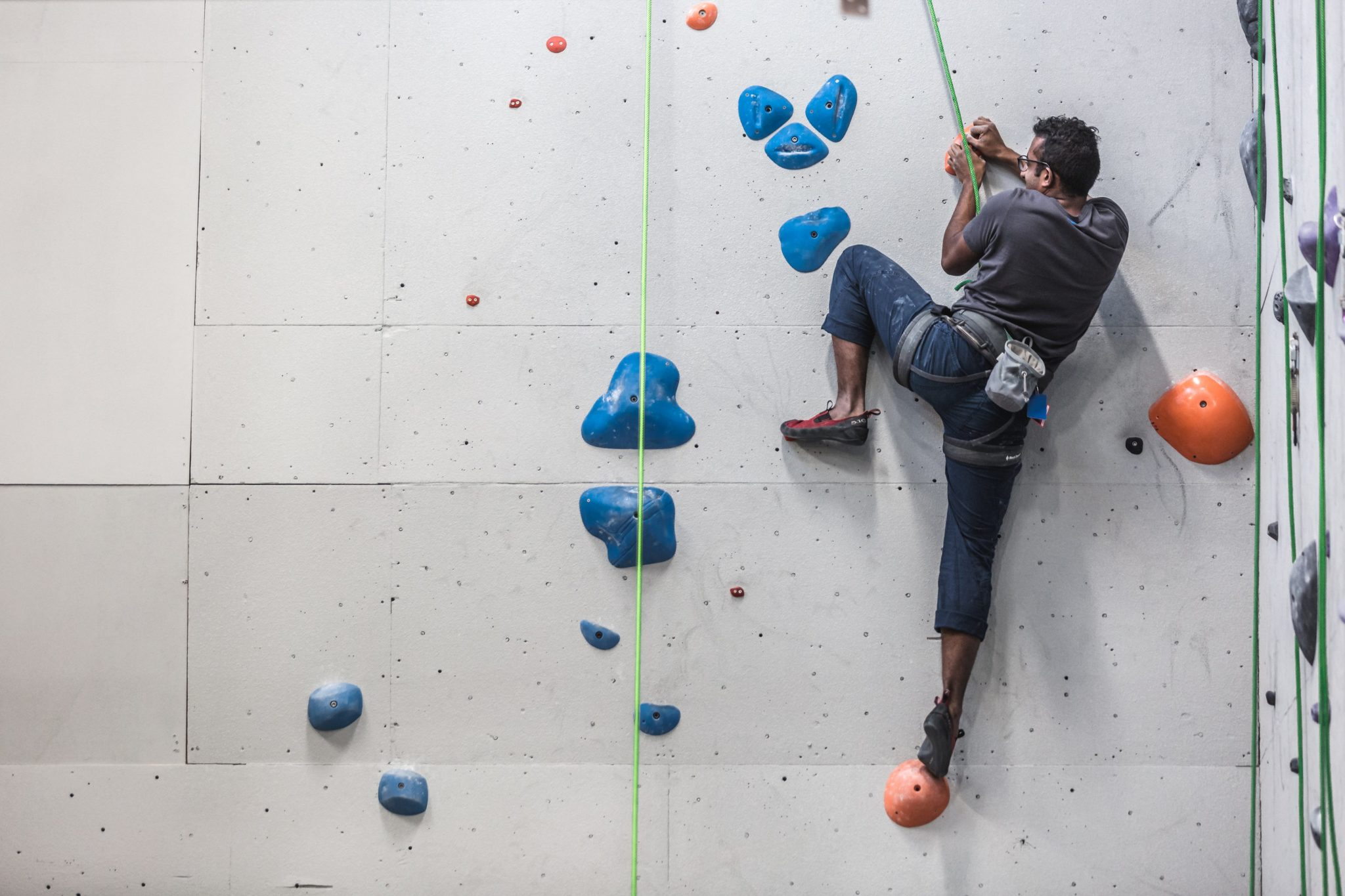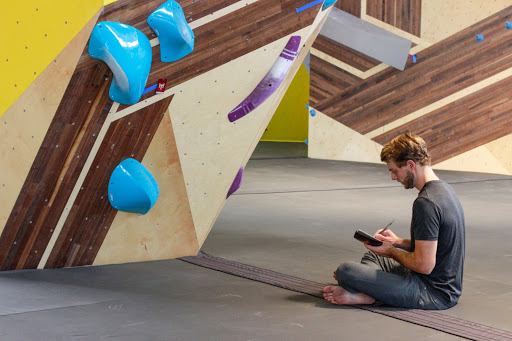Running and Rock Climbing: Training and Cross-Training Explained
Running and climbing are vastly different sports. Yet many runners are avid climbers and vice versa. Here's how to find balance.

Running and climbing are vastly different sports. Yet many runners are avid climbers and vice versa. Do you fit into this group? If so, how do you balance running and climbing? Or do you think about that at all?
The reasons you choose to run may vary widely but one question I don’t hear often is, How can these two sports live in harmony? The answer is complicated and depends on your goals.
How Running Affects Your Rock Climbing
Here, we’ll walk through how climbing and running can coexist at a supplemental and performance level as well as some of the benefits of doing both.
Training Should Be Specific to the Sport

High performance climbing requires A LOT of time on a wall to develop proper motor skills. Those motor skills show up in your technique, which most climbers should focus on more than anything.
Physiologically, humans aren’t built to scale mountains. We need to adapt ourselves over time to develop internal and external cues that tell our bodies how to move upward. More on technique here.
Climbing and climbing-specific training should be 85%+ of training for beginners, 75%+ of your training for intermediate climbers, and 50%+ of training for advanced climbers.
When planning your training for climbing and running, keep these percentages in mind. If you slip too far in either direction, your climbing performance will suffer. Don’t obsess over the numbers, however, and record every minute of your training. Paralysis by analysis will leave you stuck with no action.
Running Supports Your General Endurance
In his famous book Training for Climbing, Eric Horst says “any sustained climbing lasting in excess of two minutes is fueled principally by the aerobic energy pathway.” It’s fair to say that your aerobic energy system plays a large part in climbing performance.
Running is a great way to improve or maintain your aerobic energy system. There is a point of diminishing returns for climbing performance, though.
Climbing is a complex sport that requires a lot of time climbing. You need plenty of mileage to build the necessary motor skills to perform at a high level. Therefore, running should be supplemental if your fitness goals are solely climbing related. If you have running and climbing goals, read the periodization section to understand how you can perform at high levels with both sports.
Try Two Running Sessions Per Week
For supplemental climbing training, I suggest doing running intervals or steady-state running. Two sessions each week will maintain your running fitness and improve your general endurance.
Through these sessions, you’ll improve the efficiency of delivery of oxygen to your muscles. That means you’ll feel less fatigued when climbing long routes and you’ll increase the number of routes you can climb in a single day.
Running intervals for climbers involve 20-30 minute running sessions at varying paces. The difficulty and duration of each interval can vary. The idea is to alternate between a faster pace than your aerobic pace and a jog.
An Interval Workout You Can Try
The Run Experience has a fantastic 20-minute interval run workout on YouTube you can follow. Holly takes you through a pyramid interval structure that increases in difficulty and decreases in duration with each interval.
Steady-state running for climbers involves 20-30 minute running sessions at a consistent pace. You want to run at about 8 out of 10 difficulty or 85% of maximum heart rate.
Running Can Speed Up Recovery
Low-intensity cardio is proven to speed up recovery time. Why? It increases blood flow throughout your body, which provides your muscles with necessary products and removes unnecessary waste. Running is a great low-intensity cardio workout for climbers.
This session is not used to directly improve your climbing performance through endurance training. Nasal only breathing and speaking without gasping for air are signals that you’re in the correct training zone. Five out of ten difficulty or lower is great.
Structure Your Training with Periodization for High Performance in Running and Climbing

If you’re set on high performance for both running and climbing, structure your training with periodization. Periodization uses set periods of time to focus on improving a facet of your sport.
In climbing, this means focusing on an energy system. An example structure is four weeks of endurance, three weeks of maximum strength, two weeks of power, and one week of power endurance training.
Periodization creates a performance peak, so you can climb at your highest level. Ideally, you plan a trip or competition at the end of your training program. While focusing on climbing, you can use running to support your general endurance and maintain your running fitness.
At the end of your climbing training program, switch your training focus to running. If you’re an intermediate climber, instead of focusing 75% of your time on climbing and climbing-specific training methods, you can focus 75% of your time on running and 25% on climbing.
Maintain Your Energy Systems
While climbing during this period, your goal is to maintain your energy systems, so your performance doesn’t deplete. Make sure you have one or two climbing sessions each week to maintain your energy systems and motor skills. Since you’re largely improving your endurance energy system through running, focus on strength and power.
The Run Experience has a great deal for a 7-day free trial. The Run Experience is a company dedicated to improving and inspiring runners through coaching support, community, and providing clear programs and tools for becoming the best possible runner you can be.
You get access to all of their running training programs through the free trial. Whatever your running goals are, they can surely help. This is a great program to explore while focused on running.
Running Offers Mental Benefits to Climbers
Managing anxiety and fear while scaling a sixty-foot cliff is a real thing. As a climber, you know the importance of managing your mental landscape. One of the best ways to manage your anxiety and fear on the wall is to manage it off the wall.
Running is a great way to calm the mind. If you love running, by all means, keep up with it. The mental benefits alone will help you live a happier more productive life. That inevitably rubs off on your climbing performance.
The Verdict
With a proper structure, running and climbing can coexist in harmony. Running is a great supplemental workout for climbers to maintain and improve general endurance. For supplemental practice, keep climbing and climbing-specific training to 85%, 75%, and 50% of total training time for beginner, intermediate, and advanced climbers, respectively.
Running and climbing at a high level is also possible and best done through periodization. Lastly, if you only run for the mental benefits, then please keep running. Running is proven to improve your mental well-being, which directly affects climbing performance.
Meet Our Guest Author!

I’m Forrest, founder of Onsight Built and climbing coach. I love climbing because of the wonderful and supportive community, the adventure of exploring the great outdoors, traveling to beautiful locations, and the concept of self-mastery. If you’re looking to break through a performance plateau, improve your performance but aren’t sure how, or put together a structured plan for performance improvement, check out my coaching page!
